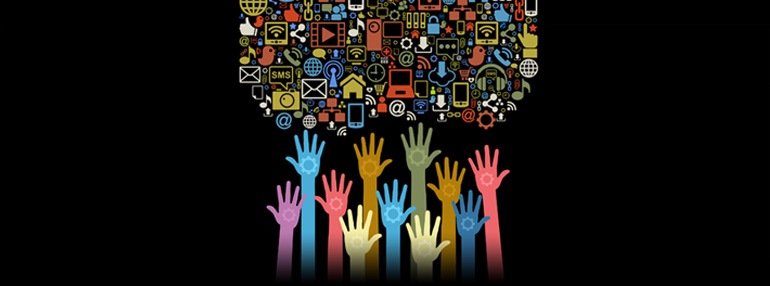Innovation
Technological utility can move us forward but for some reason innovation scares us. We prefer the convenience of sticking to what we know because modernisation stresses already restricted supplies of skills, time and of course, money.

Technology is defined as "the sum of the ways in which social groups provide themselves with the material objects of their civilisation". In other words, the methods and tools that society develops to solve practical problems. By this definition almost everything that we are at ease with today is technology: the whiteboard in your office, the book you write in and the pen or pencil you write with. These products are in fact no less disruptive than the digital technologies we have to get comfortable with today. We need to study these technologies and get used to them if they are to be efficiently employed.
Technology is welcomed when it enhances already established practices, but when it transforms a way of life or teaching we seem to motion away. When you can use a pen and paper you should, but when the digital world makes your job all the more easy and you more efficient, why not embrace it? We need to integrate digital technologies and its different platforms into our specific situations, and cloud computing is a great example of how to do exactly this.
Disruption
Content is all of a sudden very well-designed and multi-efficient. Restricting barriers fade away making information more accessible. Conferencing tools disturb traditional orders for face-to-face meeting times and at first this was seen as "disruption". When technologies disrupt as well as revolutionise, personal management skills need to be updated and remediated, often without even having to set foot in another person's office.
The age we live in now focuses on the production of information. The challenge we face is thus to articulate the intellect and unavoidability of disruptive technologies and discover what it is that makes so many of us uncomfortable with new technologies.
The linking issue is how we fully embrace these technologies, one of which is SharePoint. How do we relate the efficiency and success of this platform and how can we obtain the paybacks of the bigger-and-better interaction and platform consolidation of which SharePoint is a promoter of.
Managing Knowledge
SharePoint holds the key to collaboration. It opens a line of real time communication between employees and clients, the work of yourself and of others. Projects and documents are easily organised and people and information are more readily available and discoverable. If you don't use the platform to its full capability, then you're losing out on all it has to offer.
This is where knowledge management comes into the picture. It presents many great concepts that are relevant and applicable to SharePoint design and authority. Knowledge provides us with meaning and context. We receive information and through this information we obtain certain knowledge. The knowledge allows one to make better decisions.
Knowledge Management Features
Decision making is one of the most important reasons for developing a knowledge management system and it needs to adhere to certain facets:
- Knowledge needs to be relevant and have a purpose. There is no point in keeping useless records; it needs to add to our knowledge. Someone caring about the data is not enough reason to create it. One needs to permanently exclude data that will never be needed again.
- Knowledge needs to be obtainable on demand. We, as such, need to recreate the context of information. The question is; Why is this information still important?
- Knowledge should be able to move among multiple appropriate persons without complication. It needs to be tenacious without requiring the initiator's involvement. Knowledge needs to be objective.
- Information should be repositioned for new meanings to create new knowledge. It should, as such, not only make sense in its original framework.
- Knowledge is a higher concept than simply a sequence of details. To sustain this high level the fundamental information needs to be able to change formats without changing the core knowledge.
SharePoint can be an easy and convenient way to multiply and accelerate shared enterprise knowledge, but it can also become a failed attempt at controlling and administering content. Applying a few simple theories to your SharePoint strategy will help users share not only data, but knowledge.
What Should a Knowledge Management Tool Do?
A Knowledge Management software tool should automatically adhere to the following:
- Retrieve information from any internal or external source.
- Arrange incoming information into classifications.
- Receive manual information feedback using intuitive interfaces.
- Users should be alerted according to their individual preferences.
- Different types of information should be available so that knowledge can be clearly searched.
- Different ways of searching and browsing should be available to suit individual users.
Knowledge has developed into one of the most prized corporate assets in the business world and it needs to be managed as such. Knowledge Management is about company information and the people involved who grow the value of this information by adding skill, understanding, knowledge and suggestions.
IT tools such as SharePoint can extend knowledge networks and make it easier to find information and people who have the knowledge you seek.
Sound Idea Digital specialises in SharePoint 2013 Intranet Development. For more information, contact 012 66 44 227 or email to info@soundidea.co.za
Carina Claassens is a Writer for Sound Idea Digital l carina@soundidea.co.za l Sound Idea Digital l www.soundidea.co.za
[Back]
blog comments powered by Disqus
